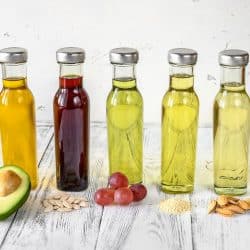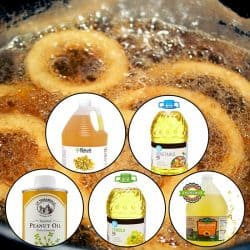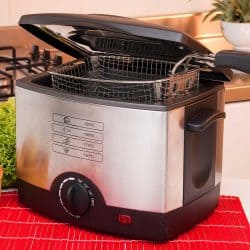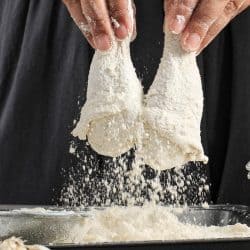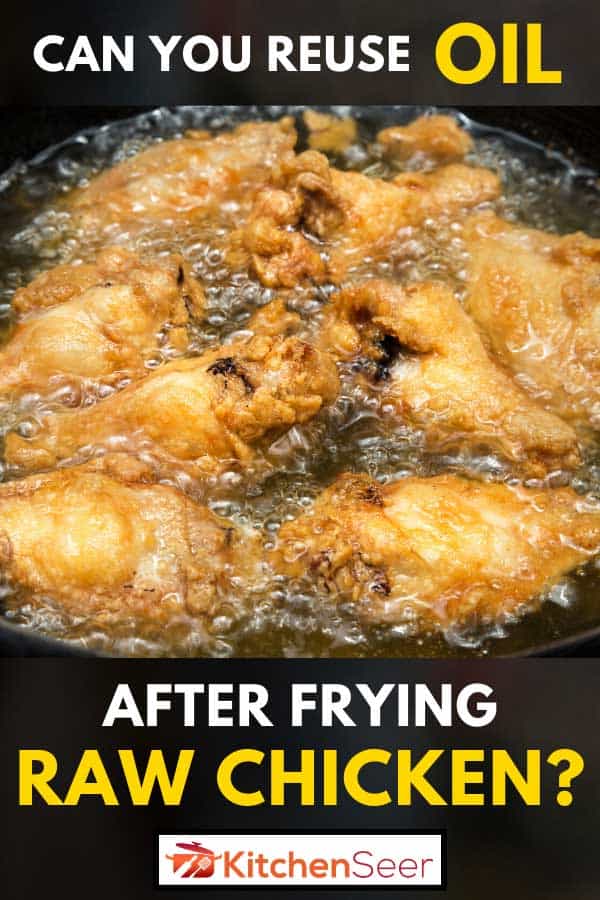 In an ideal world, we’d like to suggest you fill your fryer with fresh oil every time you want to cook new foods. But, to minimize waste, you are probably wondering if you can reuse oil after frying raw chicken. We’ve researched just how to get the most from your cooking oil to find the answer for you.
In an ideal world, we’d like to suggest you fill your fryer with fresh oil every time you want to cook new foods. But, to minimize waste, you are probably wondering if you can reuse oil after frying raw chicken. We’ve researched just how to get the most from your cooking oil to find the answer for you.
Yes! You can reuse cooking oil even after frying raw chicken, vegetables, and battered foods. Let the oil cool. Then, you’ll want to skim off any large pieces of remaining food or fried batter. Drain the cooled oil from the fryer and strain the used oil to store it in a resealable container for later use.
If you love fried chicken as much as we do, you’ll want every batch that comes out of your fryer to be moist, crisp, and delicious. Keep reading and, we’ll tell you how to store and reuse cooking oil properly. We’ll also divulge some tips to help you achieve a perfectly golden, tasty fried chicken every time you bring out the fryer.
How Do You Store Oil After Frying?
Let the cooking oil cool completely. Drain the cooled oil from the fryer. Next, you’ll want to strain used oil by pouring it through a fine-mesh sieve to remove any bits of food. Finally, pour used cooking oil into a clean, resealable container. Store in a cool, dark location.
It’s a good idea to label your used cooking oils for storage. Oils tend to hold onto the flavors of the food that had most recently been fried in the oil. For instance, clean fried foods like non-battered vegetables leave behind light residual flavors. Battered fried foods leave behind light flavors too but, bits of batter residue can eventually degrade the oil. Greasy fried foods, like chicken and fish, can leave behind stronger flavors.
For longer-term storage, you can refrigerate or freeze the used cooking oil. The CDC recommends storing used oil for up to 3-months.
How Many Times Can You Reuse Oil for Deep Frying?
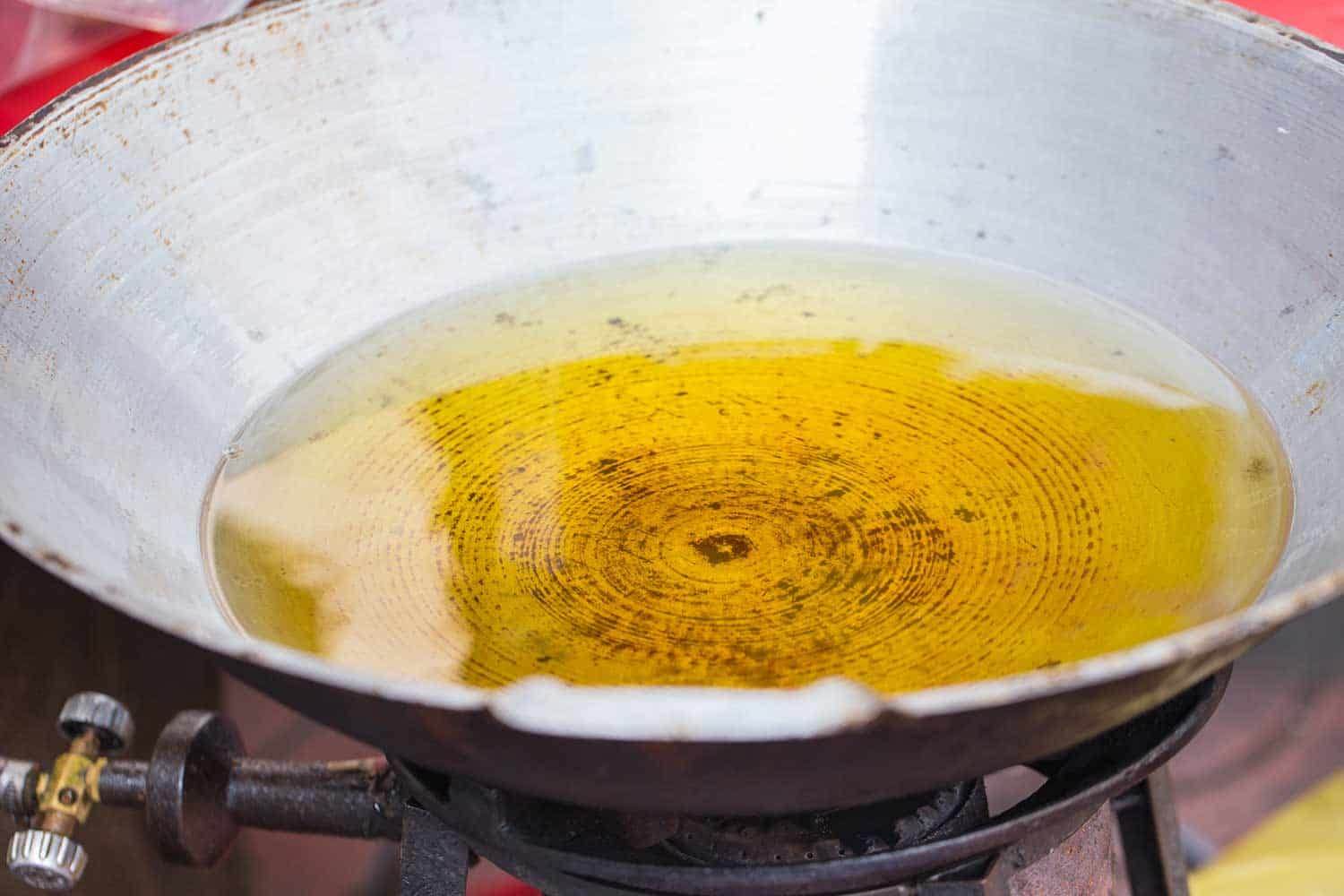
There is no specific rule on how many times you can reuse cooking oil. But, over time, the oil degrades. Frying fresh foods in degraded oil means a greasy, soggy result. Cooks Illustrated performed several fry tests with reused oil to recommend:
- 3 to 4 uses for breaded/battered foods
- 8+ uses for non-battered, fried foods
If you notice used cooking oil appears cloudy, begins to foam or gets smokey as it gets hot, or has a foul smell, you should discard the used cooking oil and use fresh oil instead.
Want to know just how much oil is the right amount to fill your fryer? We’ve got the answer covered for different types of fryers and foods, check out our blog, “How Much Oil Do You Put in a Deep Fryer?”
Does Fresh Oil have a Shelf Life?
Believe it or not, cooking oil does eventually expire. If you are uncertain about the freshness of your cooking oil, check the bottle for an expiration date. Spoiled oil might also have a foul smell, discoloration, or bitter taste.
Unopened oil will stay fresh for up to two years when stored correctly in a cool, dark location. The pantry is ideal for storing cooking oils.
Once you’ve opened a bottle of cooking oil, it should be used within three-months but can stay fresh for up to one year if resealed and stored correctly. If you prefer to store your cooking oil on the countertop, use either a non-transparent or tinted container to keep it in the dark and extend the oil’s shelf-life.
Do You Cook Chicken Before Frying?
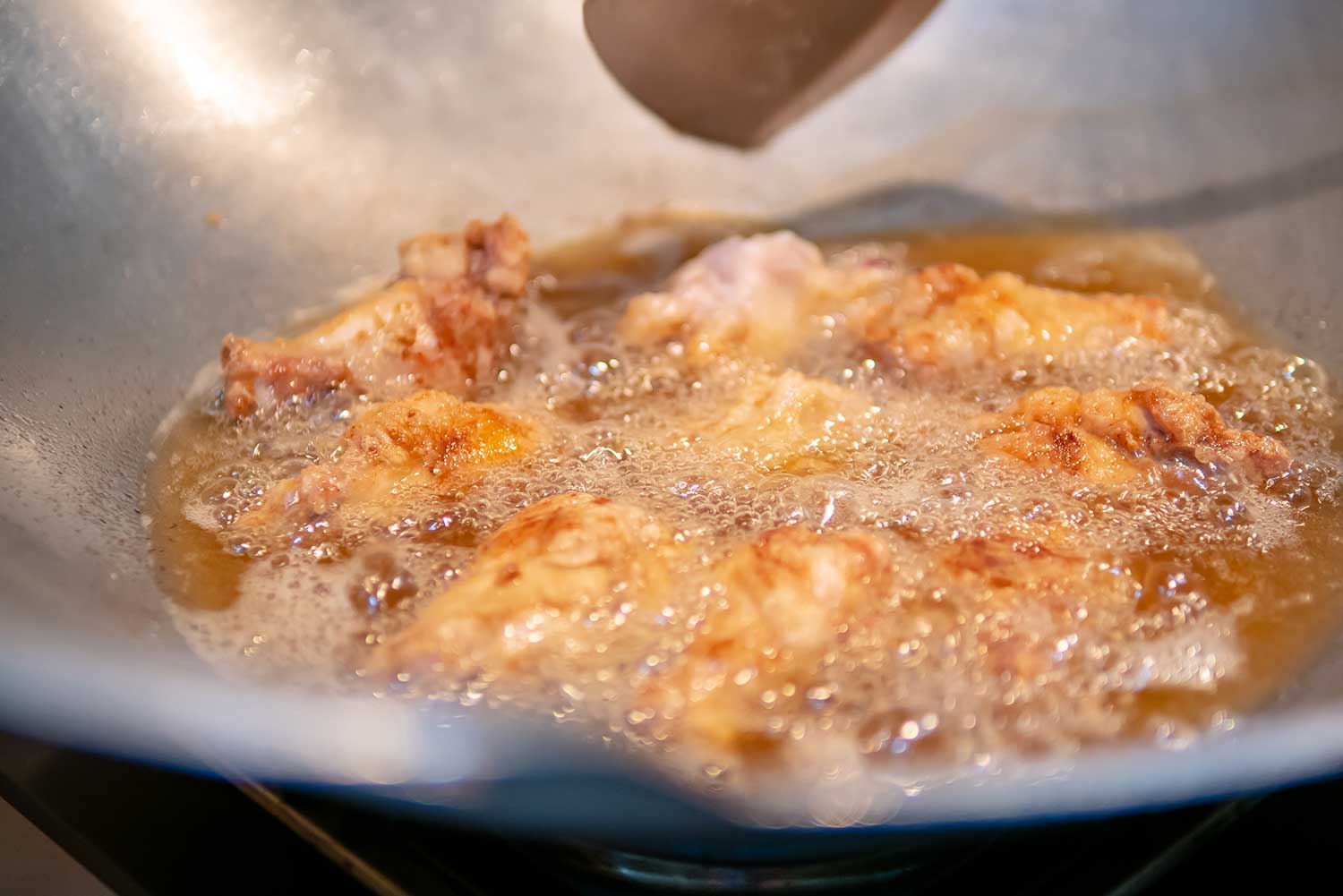
There is no need to precook chicken before you deep fry it. But, to achieve a moist, tender inside and crisp, flaky outside every time you fry chicken we’ve got a few helpful tips:
Temperature
Monitoring the temperatures of both the cooking oil and the chicken will ensure that your chicken fries evenly and is thoroughly cooked when ready to serve.
- Thaw frozen chicken.
- Bring chicken to room temperature before frying.
- Heat cooking oil to 375°F to fry chicken pieces.
- Thoroughly cooked chicken should have an internal temperature of 165°F.
Oil
Every type of oil has a smoke point, the temperature at which the oil begins to breakdown or smoke. Low smoke point oils can give your fried foods a burnt or bitter flavor because the oil starts to breakdown before the food is fully cooked. Select a neutral-flavored, high smoke point oil for frying chicken:
- Peanut Oil
- Vegetable Oil
- Canola Oil
- Safflower Oil
Preparation
If you want to savor a juicy morsel of fried chicken in every bite, we suggest a little bit of prep-work before dropping raw chicken into the deep fryer. First, soak the raw chicken in a seasoned brine for between 4-hours and 24-hours. Among top chefs, buttermilk is the brine of choice for fried chicken. Add an assortment of your favorite spices to the mix like pepper, garlic powder, paprika, cayenne, etc.
Breading the chicken before frying will achieve that satisfying, “Crunch!” The simplest breading involves flouring the brined chicken pieces, dipping pieces into an egg/buttermilk batter, and flouring again. Spice up the flour by mixing seasonings and herbs in for extra flavor. You can also bread raw chicken by using bread crumbs, flour, and cornmeal, or panko flakes.
If these fried chicken tips have your mouth watering, but you don’t yet have a fryer in your kitchen, check out our blog, “How Much Does a Deep Fryer Cost?”

